One of the more common visual challenges that shooters have is cross-eye-dominance…where their dominant eye is different than their favored hand.
They either shoot with their right hand and left eye or shoot with their left hand and right eye.
It can be very frustrating because shooting with cross dominance can make things appear very different than they actually are. Here’s an example for shotguns…
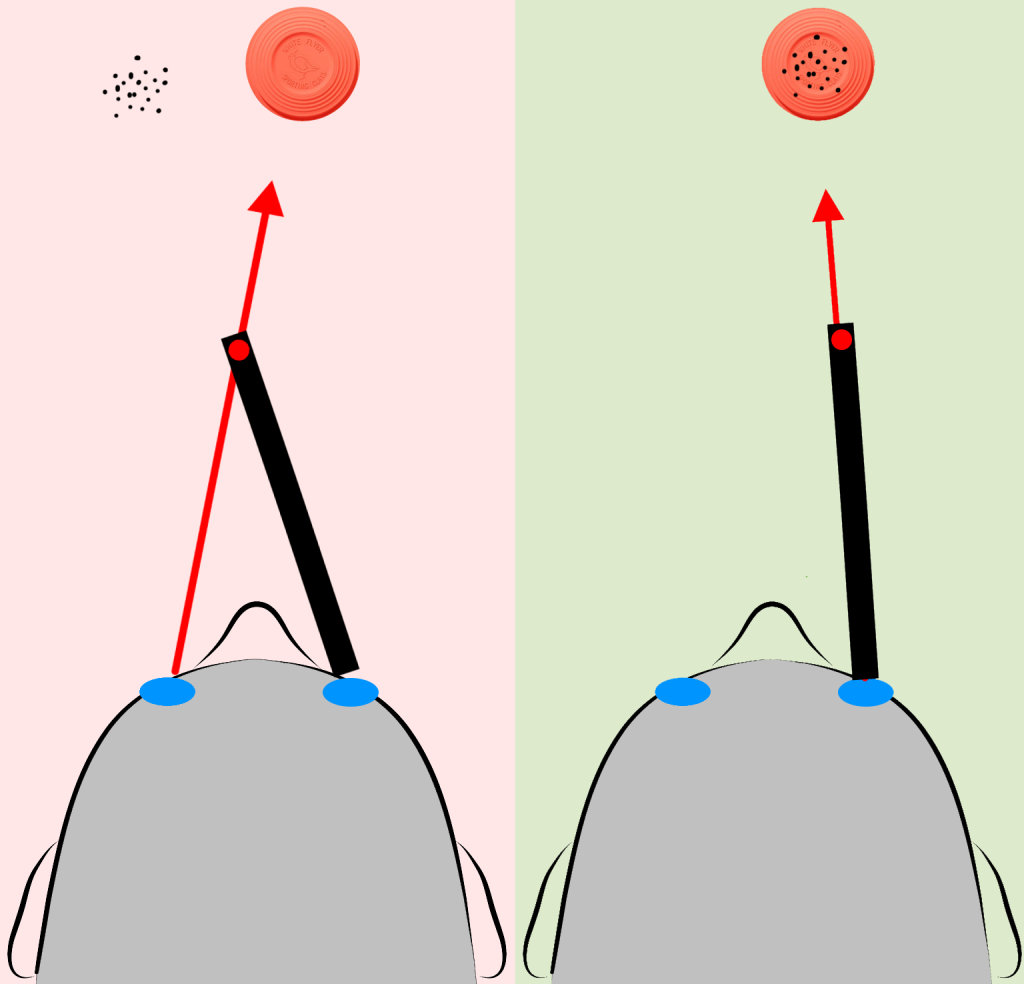
It’s a challenging topic, in large part because of all of the inaccurate information floating around about eye dominance.
As an example, the most common ways to test eye dominance are incorrect. The triangle method (tight and loose), the hole-in-card method, and even the finger/thumb method and pen method IF the shooter shuts one eye at a time to determine dominance.
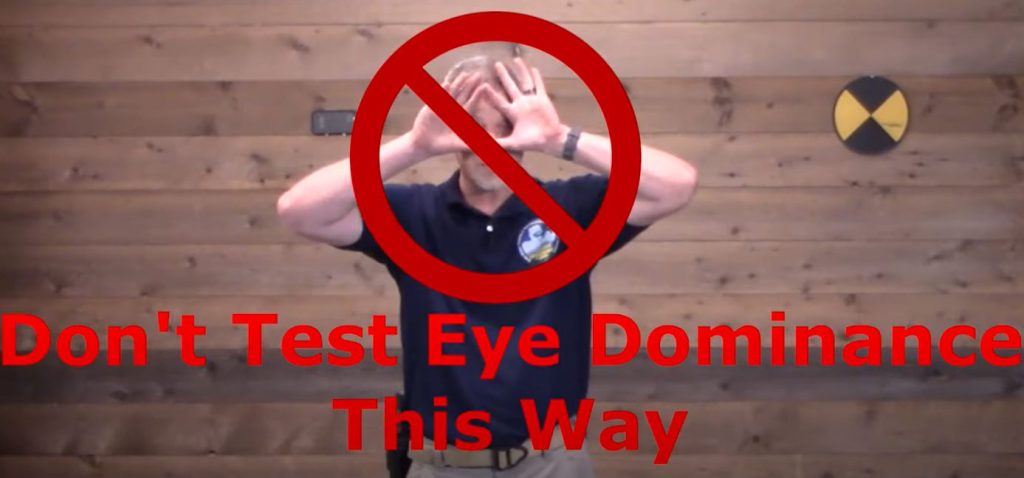
The biggest challenge with these methods of eye dominance testing is that they tell people that they are either right or left eye dominant when there are other forms of dominance.
11% of the population has cyclopean or central dominance.
Another 20% have shared dominance.
Each of these cause shooters to have confusion when shooting with both eyes open and to have left-right misses even when they think their sights are perfectly aligned.
For fast+accurate shooting, we want dominance stabilized to one eye.
Scapegoat
Besides assessing eye dominance incorrectly, a lot of shooting problems are blamed on cross dominance that aren’t caused by cross dominance.
As an example, problems that are caused by eye alignment issues are oftentimes blamed on cross-dominance.
Same with eye coordination issues. Whether it’s tracking a moving target, visually fixating on a target while moving, or shifting focus from one target to another, we want our eyes to start and stop at the same time and on the same target. When people have challenges with this, they often blame it on eye dominance.
Dominance depends on context
Another challenge with eye dominance testing is that eye dominance can shift from one eye to another depending on what we’re holding in our hands, lighting, which direction we’re looking, and more than 100 other factors that may or may not apply to you.
For people taking medication for hypertension, it can shift based on the ebb and flow of their blood pressure.
For diabetics and people with blood sugar regulation challenges, it can shift based on blood sugar levels.
Distance can shift eye dominance (as shooters with monovision oftentimes find out).
AGE can cause a shift in eye dominance…normally in the 40s or 50s.
Even stress levels can shift eye dominance, as we’ll discuss in a bit.
So, let’s say that you’ve correctly assessed your eye dominance and you’re cross-dominant. That means that the hand you use is on the opposite side of your preferred eye.
For pistols, it’s not a problem that normally needs to be fixed. Simply turn your head so that your dominant eye is lined up with your midline, bring your pistol to your midline and up, and you’re good to go.
For shoulder mounted weapons, it’s more of a challenge.
Many people try closing an eye, but there are several problems with this…none of which are “situational awareness.” The biggest problems are that closing an eye reduces the amount of light entering the open eye and slows down the speed that we can see, process, and act. I go into the other problems with closing an eye here:
In short, we want to shoot with both eyes open…regardless of the platform we’re shooting or the shooting discipline. The challenge is how to do it without it being frustrating.
What about patching or tape?
Most patching or taping that’s done for shooting is done in a way that’s not ideal.
You may have seen Olympic and world class precision shooters wearing a patch over one eye.
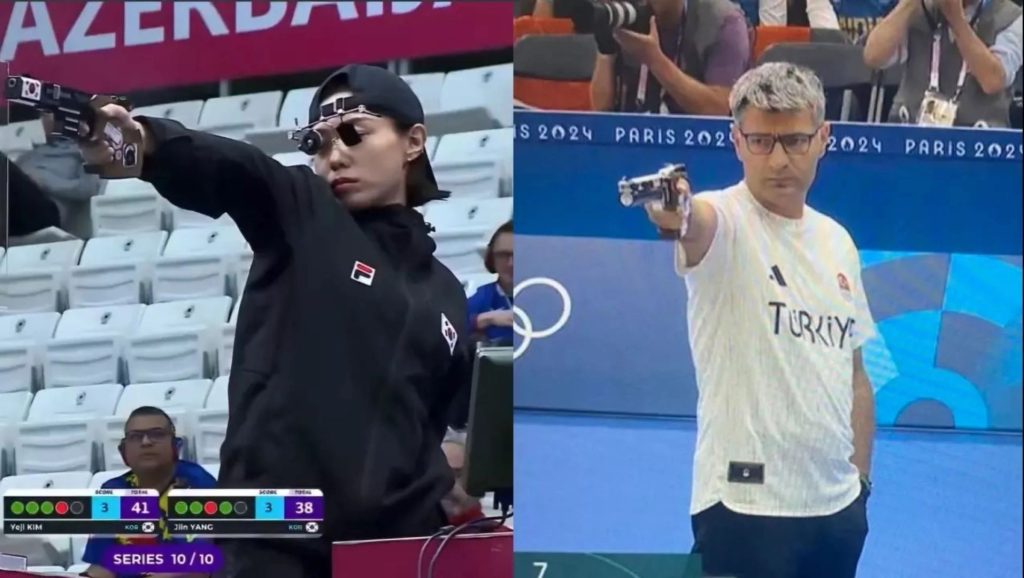
This is a compensation that normally comes at a cost. They can still (obviously) achieve great results, but for most shooters, patching one eye causes the performance to have a higher metabolic cost, because of balance and how the brain is wired to detect threats. This means that it’s harder to perform at their best at the end of a long match and that it takes longer to clear out the metabolic waste from the brain between matches.
One of the biggest ironies is that patching the entire field of view of an eye actually makes the patched eye MORE dominant when the patch is removed.
Taping the middle of our field of view can increase the perceived threat level in our brain and that is rarely wanted or needed for shooting performance…in fact, most people want to do just the opposite.
A preferred method is to use matte scotch tape or chapstick on the INSIDE FIELD of view of our shooting glasses instead of putting it in the middle of the lens. This allows us to keep seeing distance objects with our non-sighting eye, but our firearm is only visible with our sighting eye.
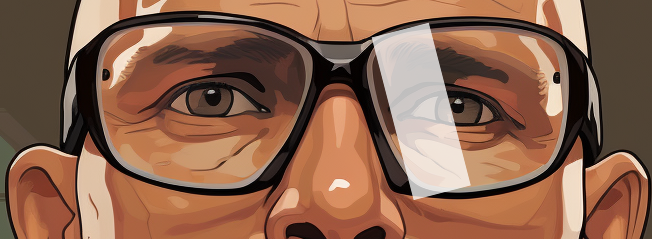
As a bonus, this method oftentimes creates less disorientation when walking than methods that block central vision.
What about drills to change eye dominance?
Several years ago, I trained the ability to shift eye dominance at will and helped others do the same.
It worked…until it didn’t.
For me, it worked until I was shooting a blacked out stage with a handheld flashlight, leaning around a metal door frame in a national championship match. The stress level got high enough that my brain reverted back to using the eye that IT wanted to use instead of the eye that I wanted to use. It caused lateral misses, even though I saw a perfect sight picture and video showed that I wasn’t disturbing the muzzle with my trigger press.
I’ve seen this in others in competition situations and force-on-force training. They were able to shift dominance at will until the stress level got to the point that the brain demanded control. I have yet to see a shooter who trained their brain to suppress their dominant eye who didn’t have the brain switch back to the eye it wanted under stress. (This is VERY different than injuring the dominant eye and switching the eye that you shoot with)
There’s a good reason for this. One way that we can look at eye dominance is as a survival tool. The brain prefers to use the image from the eye that it can process and act on the fastest. Depending on the study, the time differences reported are in the 6ms, 14ms, and 15ms range for healthy eyes among elite athletes. A clay traveling at 42mph will travel 62 feet per second…or about 10.5″ in 14ms. In short, the eye that we use to lock onto the clay can shift our lead on crossing targets by 10.5″!
The bigger the time difference, the greater the preference. As the stress/threat level increases, processing speed becomes more important.
Here’s a big (huge) reason not to try to do drills to change eye dominance. As Dr. Donald Teig says in his book, “High Performance Vision,” “Any attempt to change a person’s eye dominance may result in stuttering issues, reading confusion, or coordination problems.”
So, what can we do?
The first thing that we want to do is accurately assess eye dominance. Unfortunately, the majority of firearms instructor training teaches instructors an incomplete method of assessing eye dominance.
The second thing is to stabilize eye dominance to one eye (the brain’s preferred eye).
The third thing is that we want to improve fundamental eye and vision performance…both eyes pointed at what we’re looking at, coordinated movement between the eyes, peripheral awareness in each eye, and more.
If the dominant eye is not on the side that we want it to be, we have a few options.
Unfortunately, the best performance is going to happen when we shoot with both eyes open using the eye that’s on the same side as the shoulder we’re using. Right eye, right shoulder…left eye, left shoulder.
It is possible to perform well with almost any other compensation, but the metabolic cost in our brain will almost always be higher, we’ll burn more oxygen and glucose, tire sooner, and have more erratic performance.
This is shocking to most who dread switching hands/shoulders, but what we’ve found over the last 5-10 years is that if you stabilize eye dominance to one eye and do 5-15 minutes of dry fire per day for 21 days, it is very simple and fast to make the switch. That’s a total of 2-3 hours. With pistols, it’s likely that they’ll be 80% as good with their non-dominant hand as their dominant. With shotguns, carbines, and long range precision, it’s very common for shooters who have struggled with cross dominance for years or decades to quickly shoot better than ever with both eyes open after making the switch.
If spending 2-3 hours doing dry fire over 3 weeks to potentially eliminate a lifetime of frustration isn’t in the cards because you need to perform today or tomorrow, here are some options for shotguns, carbines, rifles, and archery…
- Tape the inside field of view of one or both of the lenses of your glasses. You want to be able to see your target with both eyes, but your muzzle/arrow should only be visible with your sighting eye.
- If you’re left eye dominant and right handed, TRY shouldering your weapon on your left shoulder, but keep using your right hand. This is kind of a radical and non-standard solution that feels awkward at first. Some would call it horrible. Maybe it is…but I’ve been using it for 6+ years, it works for many and it can be either a step in the process OR a long term solution.
- Learn to suppress your non-sighting eye. This technique trains your brain to switch back and forth between suppressing one eye and then the other. I like using a paper towel core. If you want to make it more tactical, you can even paint it black, or flat dark earth. I’m teaching how to do this in a class this weekend >HERE<
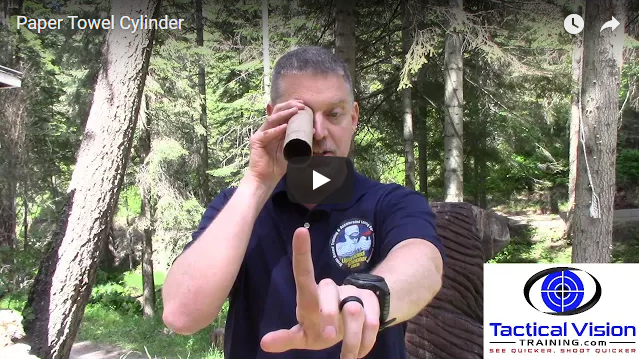 It’s important to note that this doesn’t change eye dominance…or the brain’s preference for the image of one eye over the other when survival is at stake…but it does allow us to suppress the dominant eye and use the non-dominant eye for sighting.This is particularly valuable for long range precision so that you can keep both eyes open and shift back and forth between looking through the glass and around the glass. The challenge will be that at SOME level of stress, your brain will pick an eye, regardless of what you want it to be, so if you do this, you need to stress-test it. We cover how to do this in the See Quicker Shoot Quicker training as well.
It’s important to note that this doesn’t change eye dominance…or the brain’s preference for the image of one eye over the other when survival is at stake…but it does allow us to suppress the dominant eye and use the non-dominant eye for sighting.This is particularly valuable for long range precision so that you can keep both eyes open and shift back and forth between looking through the glass and around the glass. The challenge will be that at SOME level of stress, your brain will pick an eye, regardless of what you want it to be, so if you do this, you need to stress-test it. We cover how to do this in the See Quicker Shoot Quicker training as well. - You know how I mentioned that patching an eye makes the patched eye MORE dominant? You can take advantage of this in competition by patching the eye that you want to be dominant up until you’re ready to shoot and then take it off to shoot.
If cross-dominant shooting has been a problem for you or your students…
I’m teaching a Zoom class online on it this Saturday that you’re going to want to attend. It could very likely end (or prevent) years of frustration with eye dominance issues.
You can check it out >HERE<
Questions? Comments? Fire away by commenting below…
Leave A Response